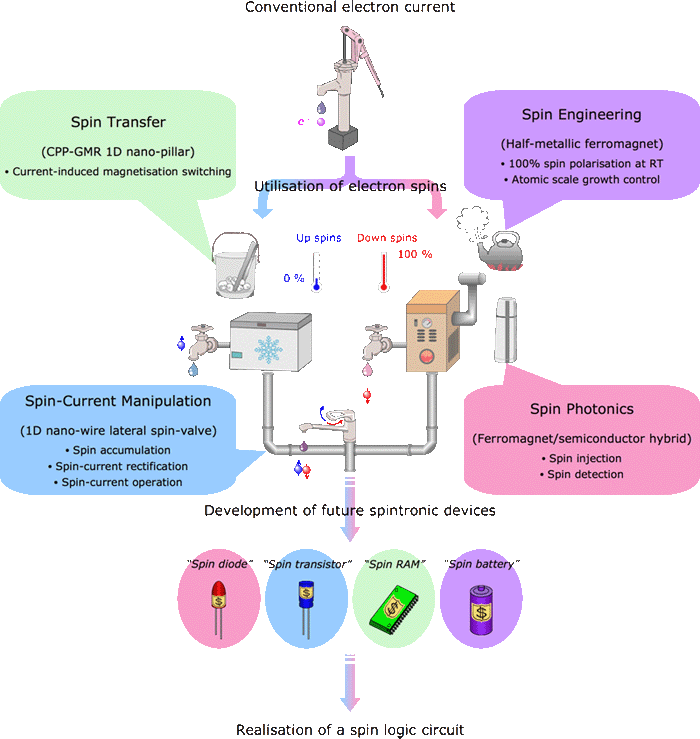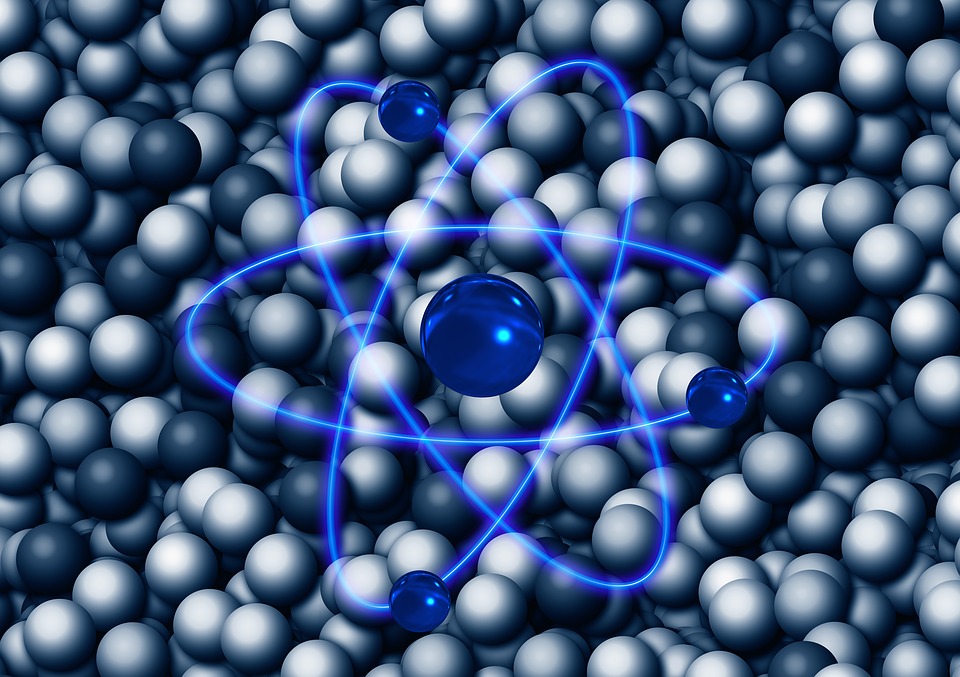Spintronics: The Technology Revolution You’ve Probably Never Heard Of
In the last 50 years we have revolutionized the world with electronics by exploiting a fundamental property of electrons – charge. Now researchers are working towards the next leap forward in technology using another fundamental property of electrons – their spin. The field is called spintronics – portmanteau of spin transport electronics. The idea is to use an electron’s spin in much the same way we use its charge. Electronics today encode information by using electrical currents to represent 1s and 0s. If the current is on and electrons are flowing, it represents a 1. If the current is off, it’s a 0. Electrons themselves can have spins in two orientations, up or down.
 |
| Spintronics : The Future of Electronics |

Spinning electrons effortlessly danced their way through new materials even without moving themselves they are able to send information they make communicating with just ones and zeros belong to the past creating a whole new era of micro processing smaller faster and energy-efficient while the potential of spinning electrons is huge towing them in line seems a big challenge. Bart Van, masters the taming of spinning electrons, he and his physics of nano devices team part of the Institute of Advanced Materials at the University of Groningen owned the world record in spin control and transport leading the world of spintronics.
Every time you switch on an electronic device like your cell phone your car or your computer electrons start moving through micro processes in these processes tiny switches known as transistors function by letting electrons pass or not thereby communicating with zeros and ones. over the decades the size of electronic components has shrunk ever more producing ever more powerful micro processes but increasing the power of micro processors increases energy consumption and heat production which is becoming too much to handle so in order to keep developing at the same pace we need innovative more efficient and more powerful devices on a nano scale driven by curiosity and thinking with his hands.
 |
| Graph showing a population of spin up and spin down electrons, as well as the resulting spin polarization in a solid. After leaving a spin polarized injector, the spin populations decay to 50% while the polarization decays to 0. |
Bart Van experiments with Graphene in order to find new ways of controlling spinning electrons under desktop conditions. Graphene is an excellent conductor of electrons and a very good conductor of electron spin. Spin is a quantum mechanical property of electrons which makes them behave like very small compass needles, the spin of an electron has a direction and can point up or down or in between so spin can be used to transfer information even through an insulator but the spin signal is very small making it difficult to handle. In a recent breakthrough Bart Van found a way to increase this signal by a hundred times.

Furthermore electron spin is what makes a material magnetic so spin currents are a very natural way to read or write information to magnetic memory the first magnetic memory chips based on spin currents may already be part of your mobile phone and computer within just five years due to his practical approach in this miniscule world of spinning electrons Bart Van is bringing spintronics ever closer to your desk your car and your cell phone making them work faster while using less energy.




0 Comments